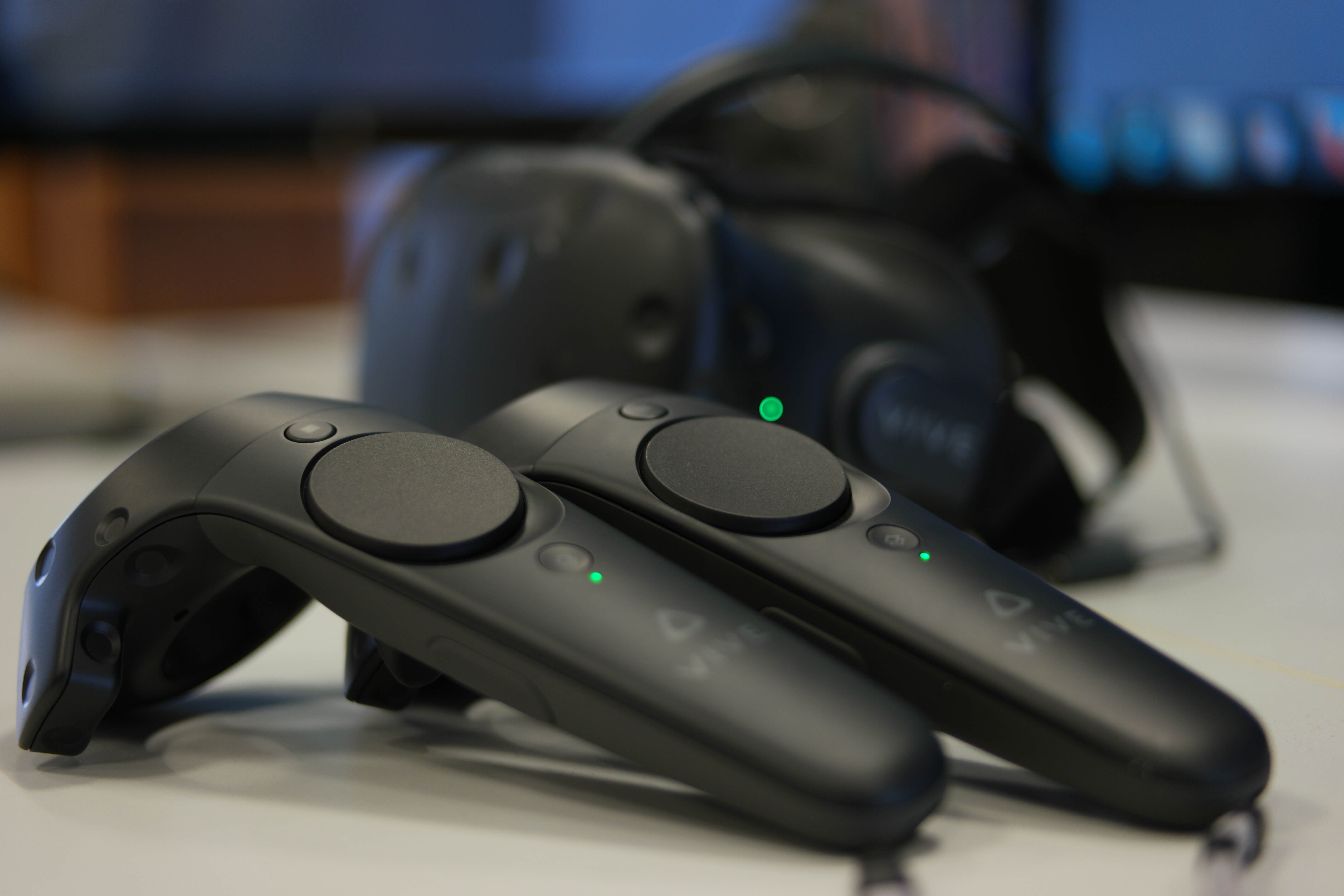




In our project, we decided that we woudn't simply, test our idea on a screen in our Lab, but to enhance the experience of the tester by testing on a virtual screen in a virtual environment.
Therefore we modelled a virtual operating room, with a typical bed, a patient, a hanging screen, typical lamps and other typical tools, like scalpell and scissors. We used the game engine Unreal 4.12 because it is one that supports virtual reality and the HTC Vive.
This Enviremont is experienced via a Head Mounted Display(HMD), for a high level immersion. After testing with the Oculus2 and the HTC Vive, we decided to use the HTC Vive as our HMD. We experienced less motion sickness while using the Vive and the higher display resolution of the Vive, where both good reasons for us.
With a greater resolution we could enhance the fidelity of our VR.
The possibility of moving several steps in the real world while being tracked that the Vive comes with enhanced the feeling of presence while lowering the motion sickness at once.

To further increase the fidelity and presence we brought the tracked hands, that were tracked of the tester via Leap Motion in front of the Vive, into our World. As white floating hands give the tester feedback about the actual gesture that is made, we wanted to go one more step. We decided, that while it is wanted that the tester sees its hands while evaluating, it is unlikely but possible that the tester looks at both feet aswell.
So we brought moving feet into our world, since we tracked them anyways, we decided that it might help the tester if visual feedback beside the interface was given and it could increase the fidelity and presence even more.
The virtual reality has another great benefit, because other than a real testing enviroment it is portible and gave us the opportunity to evaluate directly at the hospitals other than having the doctors come to us. And it can be used in any future work at this topic.